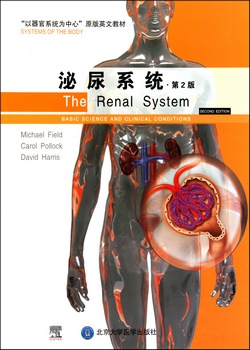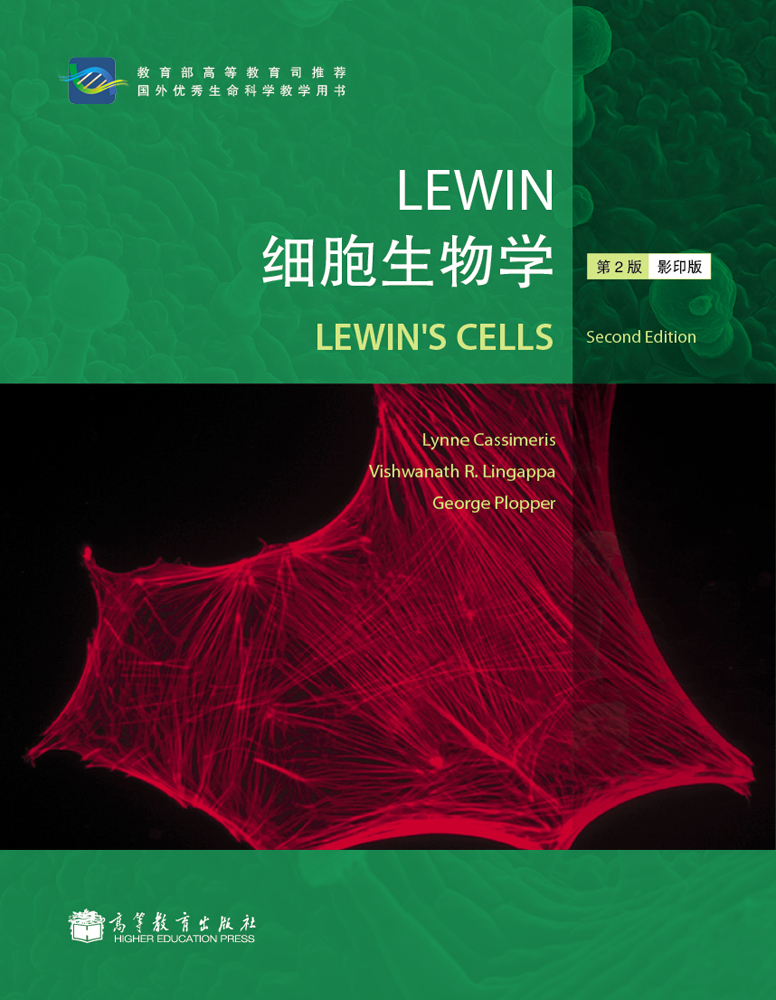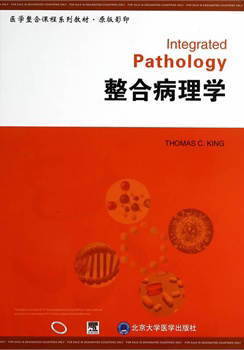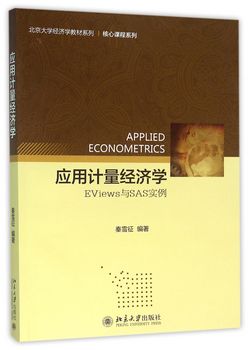心血管系统(第2版) / 以器官为中心原版教材
¥52.00定价
作者: Alan Noble
出版时间:2011-05
出版社:北京大学医学出版社
- 北京大学医学出版社
- 9787565901164
- 63761
- 49153136-4
- 平装
- 16开
- 2011-05
- 医学
- 临床医学
- R331.3
- 医学
- 本科 研究生(硕士、EMBA、MBA、MPA、博士)
内容简介
“以器官系统为中心”的医学教学模式是国际医学教育的趋势。本系列书是世界著名医药卫生出版集团爱思唯尔公司出版的一套“以器官系统为中心”的医学基础课程教材。该套教材第1版出版后受到世界各地许多医学院校的欢迎,并被多家进行“以器官系统为中心”教学的医学院校选定为教材。第2版根据第1版出版后教师和学生的反馈意见,结合医学知识的更新进行了全新修订。在编写内容上,该系列教材强调基础与临床的整合。每一章节都是围绕着一个临床病例展开,通过对病人问题的呈现以及解决过程引出对相关知识的探究,从而使与器官系统结构、功能以及疾病相关的重要的基础医学知识得到了完善的整合。在版式安排上,图框中的病例资料与正文中的医学知识完美匹配,一步一步地激起读者的求知欲望。本册为《心血管系统》。
目录
1 A DESIGN SPECIFICATION FOR THE CARDIOVASCULAR SYSTEM
Oxygen consumption
Carriage of oxygen in blood
Cyanosis
The battle against the hydrogen ion: acid-base
balance
Cell injury and cell death
Overall functional structure of the cardiovascular
system
Circulation time
Structure and function of blood vessels
Angiogenesis
From cradle to grave--the presentation of heart
disease.
2 CARDIAC MUSCLE STRUCTURE AND FUNCTION
Cardiac muscle
Structure of cardiac muscle
Contractile mechanism in cardiac muscle
Cardiac electrical activity
Drugs which act on the heart
3 THE HEART AS A PUMP: VALVE FUNCTION AND VALVE DISEASE
Functional anatomy of the heart
The cardiac cycle
Valve pathology
History taking for cardiac disease
Clinical examination of the cardiovascular system
Investigations of heart disease: imaging the heart
Sudden cardiac death
4 REGULATION OF CARDIAC FUNCTION
Introduction
Venous return
Control of cardiac output
Regulation of heart rate
Regulation of stroke volume
Preload effects on the heart
Contractility effects on the heart
Afterload effects on the heart
Summary
5 BLOOD SUPPLY TO THE HEART
Anatomy of the arterial supply and venous drainage
of the heart
Regulation of coronary blood flow
Ischaemic heart disease
Thrombosis
Angina
Myocardial infarction
Coronary angioplasty and stenting
Coronary artery bypass grafting
6 HEART FAILURE
Systolic vs diastolic failure
Haemodynamic events
Metabolic events in heart failure
Neurohormonal aspects of heart failure
Drug therapy for heart failure
7 THE ELECTROCARDIOGRAM (ECG)
Introduction
Producing a -lead ECG
The components of the ECG trace
Practical use of the ECG
The ECG and rhythm disturbances
Cardiac structure and the ECG
Ischaemia and the ECG
Potassium and the ECG
Drugs and the ECG
8 LARGE BLOOD VESSELS
Introduction
Haemorheology: the physical characteristics
of blood flow
Pathology of arteries and veins
Atherosclerosis
Vasculitis
Varicose veins
Vascular pathology of diabetes mellitus
Aneurysms
Non-invasive techniques for the assessment of
arteries and veins
9 RESISTANCE BLOOD VESSELS
Introduction
Resistance to blood flow
Vascular smooth muscle
Local control of vascular smooth muscle
Hormonal control of blood vessel diameter
Autonomic nervous system and peripheral circulation
control
Special circulations
10 ARTERIAL BLOOD PRESSURE
Introduction
Arterial baroreceptors
Cardiopulmonary reflexes
Chemoreceptor reflexes
Measurement of arterial blood pressure
Pathological consequences ised arterial
pressure
Treatment of hypertension
Hydrostatic pressure in the circulation
11 CAPILLARY FUNCTION AND THE LYMPHATIC SYSTEM
Structure of capillaries
Movement of substances across capillary walls
Water movement across capillary walls
The lymphatic system
Oedema
12 FETAL CARDIOVASCULAR SYSTEM AND CONGENITAL HEART DISEASE
Intoduction
How does the transition from fetal to adult circulation
occur?
The normal ECG in childhood
Congenital heart disease
Early and late management of congenital heart
disease
13 EXERCISE AND THE CARDIOVASCULAR SYSTEM
Physiological responses to exercise
Dynamic (isotonic) exercise
Oxygen debt and the recovery from exercise
Cardiovascular responses to static exercise
Training effects of exercise
Cardiovascular health benefits of exercise
Clinical uses of exercise testing
14 HAEMORRHAGE AND CIRCULATORY SHOCK
Introduction
Arterial blood pressure changes in response to
haemorrhage
Short-term responses which help to restore lost blood
volume
Longer term responses which help to restore lost
blood volume and electrolytes
Decompensated or irreversible shock following
haemorrhage
Causes of shock
Fluid replacement therapy
Glossary
Ind
Oxygen consumption
Carriage of oxygen in blood
Cyanosis
The battle against the hydrogen ion: acid-base
balance
Cell injury and cell death
Overall functional structure of the cardiovascular
system
Circulation time
Structure and function of blood vessels
Angiogenesis
From cradle to grave--the presentation of heart
disease.
2 CARDIAC MUSCLE STRUCTURE AND FUNCTION
Cardiac muscle
Structure of cardiac muscle
Contractile mechanism in cardiac muscle
Cardiac electrical activity
Drugs which act on the heart
3 THE HEART AS A PUMP: VALVE FUNCTION AND VALVE DISEASE
Functional anatomy of the heart
The cardiac cycle
Valve pathology
History taking for cardiac disease
Clinical examination of the cardiovascular system
Investigations of heart disease: imaging the heart
Sudden cardiac death
4 REGULATION OF CARDIAC FUNCTION
Introduction
Venous return
Control of cardiac output
Regulation of heart rate
Regulation of stroke volume
Preload effects on the heart
Contractility effects on the heart
Afterload effects on the heart
Summary
5 BLOOD SUPPLY TO THE HEART
Anatomy of the arterial supply and venous drainage
of the heart
Regulation of coronary blood flow
Ischaemic heart disease
Thrombosis
Angina
Myocardial infarction
Coronary angioplasty and stenting
Coronary artery bypass grafting
6 HEART FAILURE
Systolic vs diastolic failure
Haemodynamic events
Metabolic events in heart failure
Neurohormonal aspects of heart failure
Drug therapy for heart failure
7 THE ELECTROCARDIOGRAM (ECG)
Introduction
Producing a -lead ECG
The components of the ECG trace
Practical use of the ECG
The ECG and rhythm disturbances
Cardiac structure and the ECG
Ischaemia and the ECG
Potassium and the ECG
Drugs and the ECG
8 LARGE BLOOD VESSELS
Introduction
Haemorheology: the physical characteristics
of blood flow
Pathology of arteries and veins
Atherosclerosis
Vasculitis
Varicose veins
Vascular pathology of diabetes mellitus
Aneurysms
Non-invasive techniques for the assessment of
arteries and veins
9 RESISTANCE BLOOD VESSELS
Introduction
Resistance to blood flow
Vascular smooth muscle
Local control of vascular smooth muscle
Hormonal control of blood vessel diameter
Autonomic nervous system and peripheral circulation
control
Special circulations
10 ARTERIAL BLOOD PRESSURE
Introduction
Arterial baroreceptors
Cardiopulmonary reflexes
Chemoreceptor reflexes
Measurement of arterial blood pressure
Pathological consequences ised arterial
pressure
Treatment of hypertension
Hydrostatic pressure in the circulation
11 CAPILLARY FUNCTION AND THE LYMPHATIC SYSTEM
Structure of capillaries
Movement of substances across capillary walls
Water movement across capillary walls
The lymphatic system
Oedema
12 FETAL CARDIOVASCULAR SYSTEM AND CONGENITAL HEART DISEASE
Intoduction
How does the transition from fetal to adult circulation
occur?
The normal ECG in childhood
Congenital heart disease
Early and late management of congenital heart
disease
13 EXERCISE AND THE CARDIOVASCULAR SYSTEM
Physiological responses to exercise
Dynamic (isotonic) exercise
Oxygen debt and the recovery from exercise
Cardiovascular responses to static exercise
Training effects of exercise
Cardiovascular health benefits of exercise
Clinical uses of exercise testing
14 HAEMORRHAGE AND CIRCULATORY SHOCK
Introduction
Arterial blood pressure changes in response to
haemorrhage
Short-term responses which help to restore lost blood
volume
Longer term responses which help to restore lost
blood volume and electrolytes
Decompensated or irreversible shock following
haemorrhage
Causes of shock
Fluid replacement therapy
Glossary
Ind

















